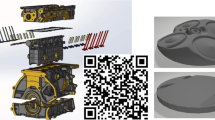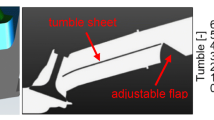Abstract
An experimental study was performed to compare the effects of high- and low-pressure exhaust gas recirculation loops (HP and LP EGR loops) on thermal efficiency and emissions of a diesel engine. Tests were conducted on a 12-L six-cylinder turbocharged diesel engine under various operating conditions. We found that at a low speed of 1100 r/min, 1 MPa BMEP, the LP EGR loop could achieve higher brake thermal efficiency and lower emissions than the HP EGR. This is because the lower enthalpy available at the turbine inlet of the HP EGR loop increased the fuel/oxygen equivalence ratio. For the HP EGR, the gross indicated thermal efficiency was reduced by 1%, but pumping losses were only reduced by 0.5%, compared to the LP EGR loop. At a higher speed of 1600 r/min, 1 MPa BMEP, the HP EGR loop attained a higher brake thermal efficiency and lower emissions because of the relatively sufficient flow through the turbocharger. For the HP EGR loop, the gross indicated thermal efficiency was only reduced by 0.5% and pumping losses were reduced by 1.5%, compared to the LP EGR loop. Lower fuel consumption and a longer ignition delay made the distribution of fuel/oxygen equivalence ratio more homogeneous, leading to lower emissions. Our data also showed that at the high speed of 1600 r/min, 0.55 MPa BMEP, the brake thermal efficiency of the HP EGR loop first increased, then decreased as the EGR rate increased. Therefore, under all conditions, a reasonable match of both EGR loops could achieve a good balance between fuel consumption and emissions of NO x and soot.
Similar content being viewed by others
References
Barouch G, Athanasios M, Jon A, et al. Measurement of automotive nonvolatile particle number emissions within the european legislative framework: A review. Aerosol Sci Technol, 2012, 46: 719–749
Johnso Tim. Diesel engine emissions and their control. Platin Met Rev, 2008, 52: 23–37
Zheng M, Reader G T, Hawley J G. Diesel engine exhaust gas recirculation—A review on advanced and novel concepts. Energy Conv Manag, 2004, 45: 883–900
Heywood J B. Internal Combustion Engine Fundamentals. New York: McGraw-Hill, 1988. 586–592
Nicolas D, Marc L, Iyad B. Combination of high egr rates and multiple injection strategies to reduce pollutant emissions. SAE Paper, 2005, 3726
Su W H and Yu W B. Effects of mixing and chemical parameters on thermal efficiency in a partly premixed combustion diesel engine with near-zero emissions. Inter J Eng Res, 2012, 13: 188–198
Kouremenos D A, Hountalas D T, Binder K B. The effect of EGR on the performance and pollutant emissions of heavy-duty diesel engines using constant and variable AFR. SAE Paper, 2001: 0198
Lujàn J M, Pla B, Moroz S, et al. Effect of low pressure EGR on gas exchange processes and turbocharging of an HSDI engine. In: Proceedings of the conference on thermo- and fluid-dynamic processes in diesel engines, Vol 2. Valencia, 2008, Paper E
Alain M, Xavier T, Jean F. Experimental study of various effects of exhaust gas recirculation (EGR) on combustion and emissions of an automotive direct injection diesel engine. Energy, 2008, 33: 22–34
Su W H, Zhan Q, Pei Y Q. Self-adaptive hydraulic variable valve timing system for diesel engine and control method. Russia Patent, RU 2012102245
Su W H, Lin T J, Pei Y Q. A compound technology for hcci combustion in a di diesel engine based on the multi-pulse injection and the bump combustion chamber. SAE Paper, 2003, 01: 0741
Author information
Authors and Affiliations
Corresponding author
Rights and permissions
About this article
Cite this article
Wu, B., Pu, Y., Yu, X. et al. Experimental study on the effects of HP and LP EGR on thermal efficiency and emissions of a two-stage turbocharged diesel engine. Sci. China Technol. Sci. 57, 379–389 (2014). https://doi.org/10.1007/s11431-014-5459-7
Received:
Accepted:
Published:
Issue Date:
DOI: https://doi.org/10.1007/s11431-014-5459-7




